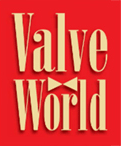A British company has found that its efforts to cost-engineer its dyeing machines with the help of Burkert Fluid Control Systems have led to an overwhelming success overseas. The opportunities for Roaches International, which designs and manufactures products and services for textile testing, have come from using the Burkert Type 2000 angle seat valve.
A number of valves are used on each machine. The process valves, says Roaches control system design engineer Tony Partridge, have easily proved their worth against their competitors when it comes to reliability and performance.
Roaches’ principle products focus on “sample dyeing and finishing” processes within the textile industry. The aim is to recreate, in the laboratory, the processing conditions of full-sized production machines. This usually involves some scaling down of full scale or “bulk” equivalent processes (many hundreds of kilograms of yarn) while maintaining the correct process conditions in the sample dyeing unit (1-10kg of yarn). A robust valve is required for the machines due to the varied range of media being used in the dyeing process. Many of the chemicals and dyes are highly corrosive.
The Type 2000 fitted the bill. The valve also met another vital requirement in the latest machine to be produced by Roaches: reduction in total cost of ownership. The latest machine – the Colorpac – was developed with a world-wide leader in textile yarn production.
The prototype machine was designed and manufactured in just over three months from a specification provided by the customer. The Colorpac is designed specifically for the dyeing of yarn in standard “packages” at high temperature (in excess of 100C and up to 140C).
This can only be done if the process vessel is pressurised. Many of the process elements are controlled using the compact air operated angle seat control valves supplied by Burkert.
The valves and other wetted parts are made from high-quality materials, predominantly stainless steel to avoid corrosion and to ensure a long service life.

